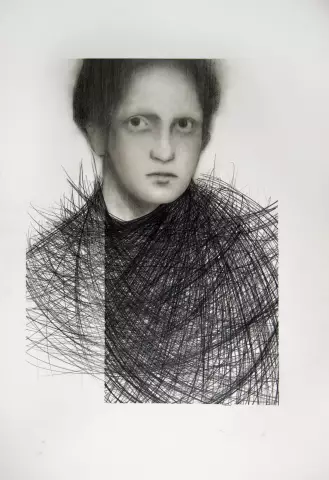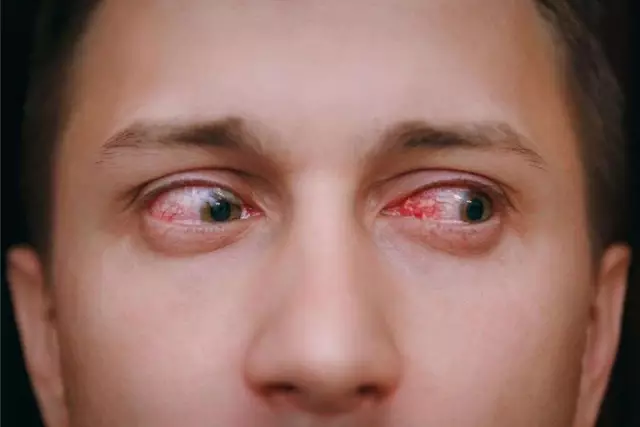- Author Rachel Wainwright [email protected].
- Public 2023-12-15 07:39.
- Last modified 2025-11-02 20:14.
Catatonia

The human psyche is extremely vulnerable. She is able to react painfully to any changes in the body. As a result of severe intoxication, infectious diseases, or organic brain damage, a person may experience various mental disorders. Such disorders include catatonia, which leads to impaired motor function of the body. This pathology has different forms and can occur in both adults and children.
Catatonia, forms
There are two forms of catatonia that can progress to one another: stupor and agitation. Both of these conditions are united by the fact that they lead to a pathological change in the patient's muscle tone. At the same time, these forms of catatonia have significant differences:
- Stupor. This type of mental disorder occurs with a significant increase in skeletal muscle tone. The muscle spasm reaches such strength that the patient freezes for a long time in one position, even very uncomfortable. Often its position resembles the placement of the fetus in the uterus, that is, the position of the embryo. With catatonia, the patient refuses any communication and does not respond to painful stimuli. It is almost impossible to change the position of his body, it often persists for weeks or even months;
- Excitation. A similar condition is manifested by muscle disinhibition. This form of catatonia can be exalted or aggressive. In the first case, the patient fools around, sings, takes mannered postures. In the second, he often becomes a source of danger, either for others or for himself, depending on the direction of the aggression.
Consciousness of the patient with any form of catatonia may remain sufficiently clear or darken.
Catatonic syndrome
The totality of the symptoms inherent in motor impairment in mental disorder make up the catatonic syndrome. It can also manifest as agitation or stupor. In this case, the excited state develops gradually or begins acutely. In the first case, the patient does not have a disorder of consciousness, he laughs for no reason, repeats the same words many times. With an acute onset of the disease, a person becomes dangerous to others, his actions are destructive.
Stupor in catatonia is divided into the following types:
- Cataleptic. The patient acquires the so-called wax flexibility, freezing in a pose taken by him independently or under the influence of people around him. With this type of catatonia, it is characteristic that he does not react to a loud appeal, but if questions are asked in a whisper, the patient begins to answer them;
- Negativistic. This type of stupor in catatonia is characterized by the fact that any external attempt to change the patient's position or at least move him from his place encounters resistance;
- Stupor with numbness. This type of catatonia is associated with the most severe severity of muscle spasm. Most often, the patient is in the fetal position.
Catatonic syndrome is often accompanied by a change in symptoms. The patient is able to pass from a state of excitement to a stupor and vice versa. In addition, it is possible to alternate between different types of stupor in the chronic course of catatonia.
Treatment of catatonia
Diagnosis of catatonia requires differentiation from other types of mental disorders. To confirm it, it is required that the patient clearly shows at least one of the following symptoms for at least two weeks: stupor, agitation, negativism, waxy flexibility. With catatonia, treatment is always aimed at the cause of the disease, since such a mental state can be caused by both intoxication of the body and organic damage to the brain.

A patient with catatonia is sent to a psychiatric hospital. In this case, he must be taken to the place of treatment, accompanied by medical workers. The main therapeutic measures are the appointment of specialized drugs. These funds are designed to eliminate the cause of catatonia and normalize the activity of the brain. If, after using drug therapy, there is no improvement in the patient's condition, he is prescribed electroconvulsive therapy.
In addition to the mental state, with catatonia, control is also required for the functioning of all body systems. In severe cases of the disease, the patient may refuse to eat, which leads to the need for drug administration of nutrients into the body.
Catatonia, the treatment of which is quite difficult, refers to complex mental disorders, often combined with schizophrenia. It significantly worsens the quality of life of the patient himself, and also brings a lot of problems to the people around him, primarily the family. To avoid serious consequences and not prolong the disease, you should seek specialized help at the very beginning.
YouTube video related to the article:
The information is generalized and provided for informational purposes only. At the first sign of illness, see your doctor. Self-medication is hazardous to health!






